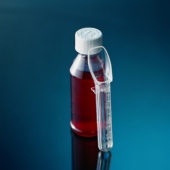
SUNDAY, March 17 (HealthDay News) — It’s the time of year when cold season and allergy season overlap, and parents need to know the active ingredients in the medicines they give their children for these conditions, the U.S. Food and Drug Administration warns.
Taking more than one medicine at a time could cause serious health problems if the drugs have the same active ingredient, which is the component that makes the medicine effective against a particular condition.
For over-the-counter products, active ingredients are listed first on a medicine’s Drug Facts label. For prescription medicines, active ingredients are listed in a patient package insert or consumer information sheet provided by the pharmacist, the FDA said.
Many medicines have just one active ingredient. But combination medicines — such as those for allergy, cough or fever and congestion — may have more than one.
Antihistamine is an active ingredient found in cold and allergy medicines. Too much antihistamine can cause sedation or agitation. In rare cases, it can cause breathing problems.
“We’re just starting allergy season,” Dr. Hari Cheryl Sachs, an FDA pediatrician, said in an agency news release. “Many parents may be giving their children at least one product with an antihistamine in it.”
Over-the-counter antihistamines include diphenhydramine (Benadryl), chlorpheniramine (Chlor-Trimeton), clemastine (Tavist), fexofenadine (Allegra), loratadine (Claritin, Alavert), and cetirizine (Zyrtec). Parents need to be cautious if they’re also giving their child medicines to treat a cough or cold.
“It’s important not to inadvertently give your child a double dose,” Sachs said.
Other active ingredients that can be found in both allergy and cold medicines include: acetaminophen (Tylenol), ibuprofen (Advil or Motrin), and decongestants such as pseudoephedrine and phenylephrine. All can cause serious health problems if children take too much of them.
Parents need to keep track of every medicine and the active ingredients each contains, Sachs said. She recommended making it a habit to write down the name of any over-the-counter or prescription medicine given to a child.
“It’s really a good idea to carry that list with you when you go to see your pediatrician or even when you go to the pharmacy,” Sachs said.
Parents should also make note of any vitamins or supplements a child is taking, as these can also have potentially harmful interactions with certain medicines.
More information
The Nemours Foundation has more about children and medication safety.

